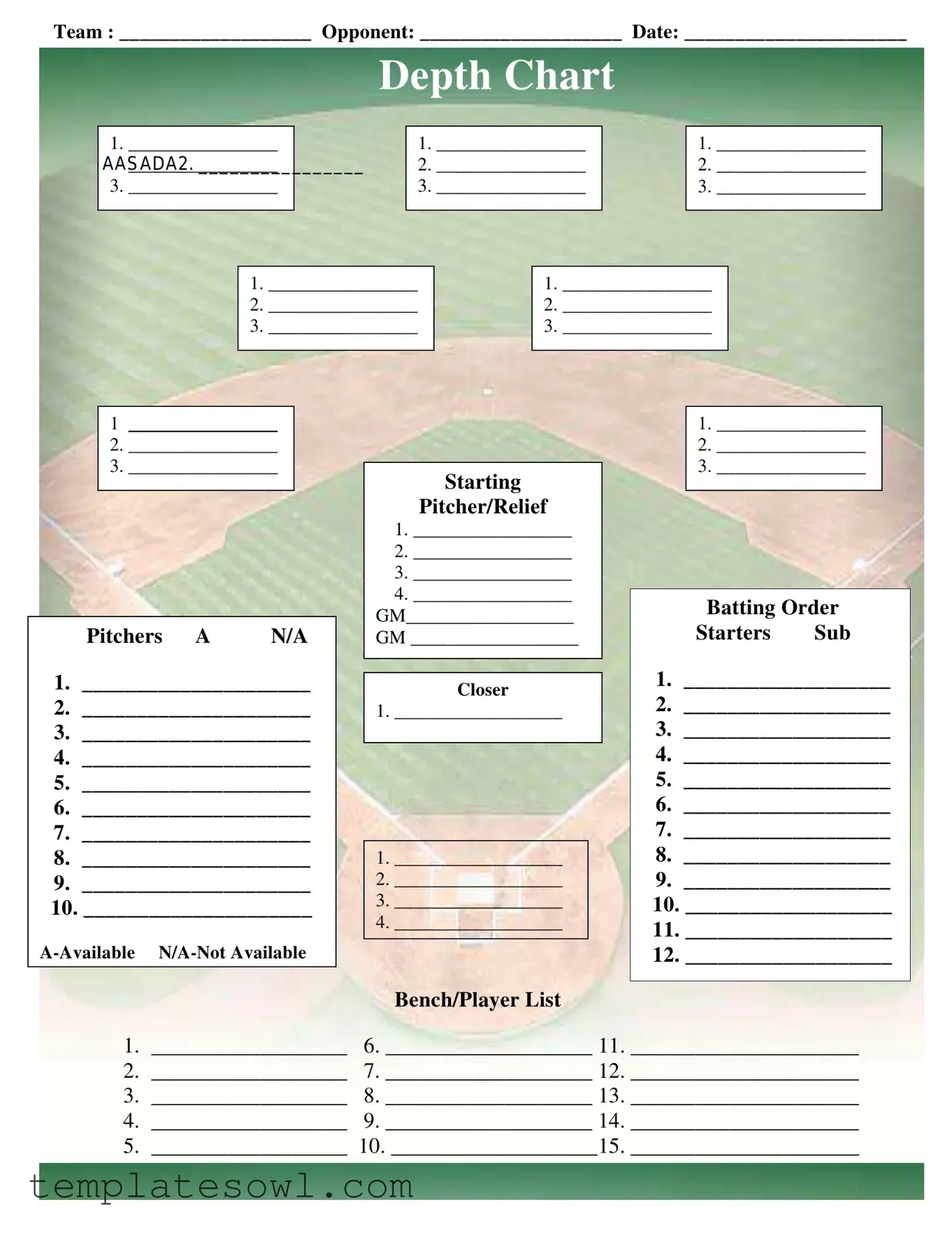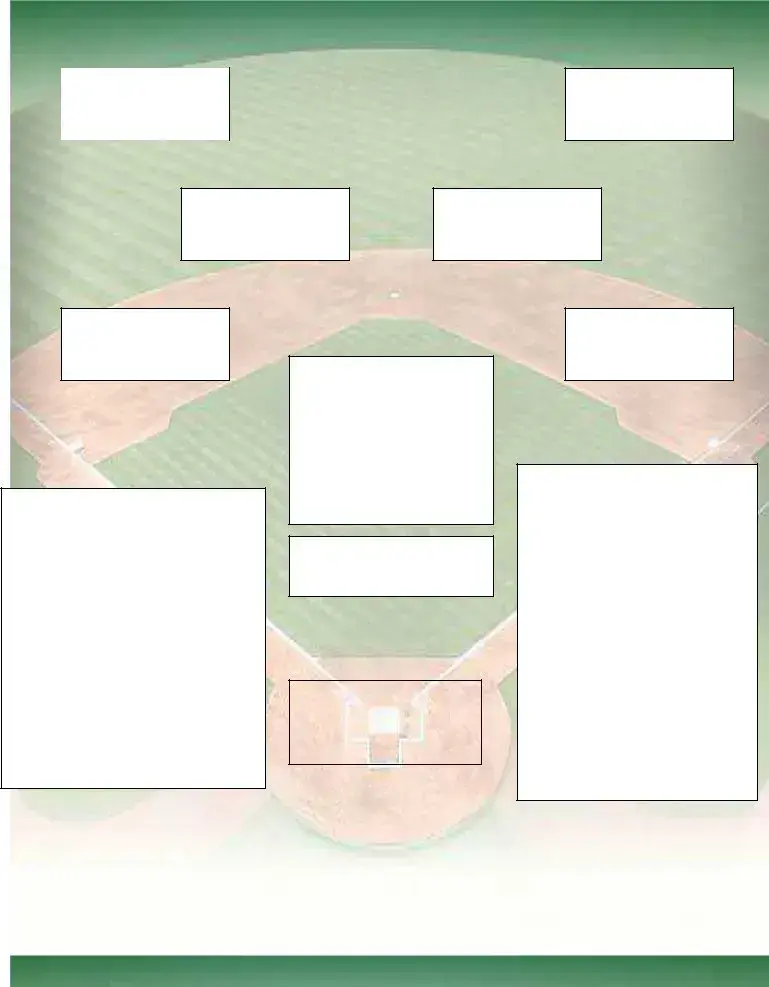When filling out the Baseball Field Lineup form, individuals may encounter several common mistakes that can lead to confusion and inefficiencies. Understanding these pitfalls can enhance the accuracy of the lineup and improve team organization.
One of the first errors often made is neglecting to fill in the team and opponent fields. It is essential for clarity to identify both teams participating in the game. Failing to do so can create misunderstanding about which team is being referenced in the rest of the form.
Another frequent mistake is leaving the date field blank. This information provides context for the specific match being planned. Not including a date might complicate record keeping and game scheduling.
Many individuals also overlook completing the depth chart correctly. Filling out this section accurately ensures that there is a clear understanding of player positions and their roles during the game. Disorganization in this part can lead to confusion during gameplay.
When listing players, it is important to avoid entering the same player’s name multiple times in different spots. Each player should have a designated position. Having duplicates can lead to misunderstandings regarding playing time and game strategy.
In the pitching section, it is common to either omit names or misclassify players as A (Available) or N/A (Not Available). It is crucial to update this section accurately to ensure the right pitchers are available and to avoid last-minute surprises.
Submitting the lineup without designating a starting pitcher can cause significant issues. Clear demarcation of the starting pitcher is essential for team tactics and game flow. Leaving this section blank can lead to confusion for both coaches and players.
Some people also fail to properly list batters in the batting order. This mistake can disrupt the team’s offensive strategy and make it harder for players to prepare for their at-bats. A well-ordered lineup is critical for establishing rhythm during the game.
Additionally, ignoring the bench/player list is a common error. It is important to keep track of all players, including those not starting. This ensures that everyone is aware of their roles and responsibilities, which promotes team cohesion.
Lastly, individuals often forget to fill in the GM (General Manager) section. Including this information is necessary for accountability and communication. It ensures that the person overseeing the team is recognized and can be contacted as needed.
By being aware of these common mistakes, individuals can ensure that their Baseball Field Lineup forms are filled out accurately and comprehensively. This attention to detail ultimately leads to a more organized and efficient game day experience.

